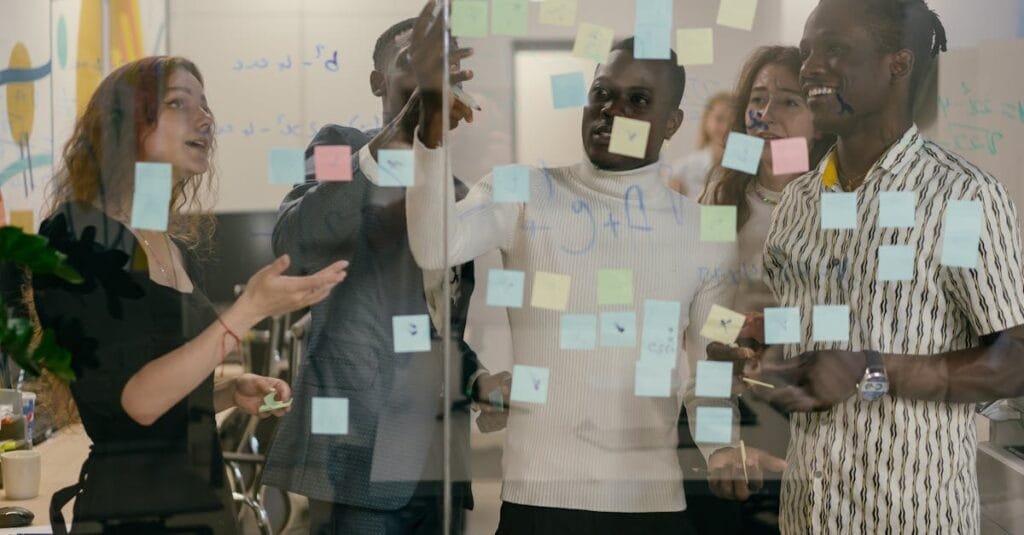Mastering Design Thinking in Shared Services
A lot of folks in the shared services world are feeling the heat. They’re juggling transformation initiatives, trying to optimize processes, and keep their teams engaged—all while addressing the needs of their customers. You might be thinking, “Where do I even start?”
Look, I’ve been in your shoes. Having spent over 20 years in the outsourcing and offshoring industry, I’ve seen it all. And if there’s one approach that shines bright amidst the chaos, it’s design thinking. Let’s get into how mastering design thinking can reshape your shared services strategy.
Why Design Thinking Matters
Design thinking isn’t just a fancy buzzword. It’s a practical approach to problem-solving that revolves around understanding your users. It’s about gaining empathy, defining problems, ideating, prototyping, and testing. For shared services teams, this means:
- Understanding user needs: Who are your internal customers? What pain points do they face?
- Collaborating: Bringing together diverse perspectives to spur innovation.
- Being agile: Quickly pivoting on feedback and results.
It’s not always easy to embrace a new mindset, especially in an industry that often relies on tried-and-true methods. But this is where the magic happens—by focusing on what truly matters, you can drive transformation in how your shared services operate.
The Design Thinking Process Unpacked
So how do we apply design thinking to shared services? Let’s break it down into digestible chunks. Here’s a roadmap that’s efficient and straight to the point:
1. Empathy: Understand Your Users
First up, you need to walk a mile in your users’ shoes. Who are they, and what challenges do they face that your shared services can address? Some practical ways to gather insights include:
- Conducting interviews with stakeholders to hear firsthand their experiences.
- Sending out surveys to capture a broader range of feedback.
- Observing teams in action to identify pain points and areas for improvement.
2. Define: Clearly Articulate the Problem
Got your insights? Now it’s time to define the real problems you aim to solve. What emerged from your empathy exercises? A clearly defined problem helps narrow down solutions. Use tools like:
- Affinity diagrams to group insights.
- Problem statements to crystallize what you’re tackling.
3. Ideate: Brainstorm Solutions
This is where the fun begins. Bring your team together and brainstorm a range of solutions. Don’t hold back! No idea is too wild. A few techniques to help you steer this process could be:
- Brainwriting—where everyone writes down their ideas, and you discuss them.
- Crazy eights—sketching eight different ideas in eight minutes.
4. Prototype: Build It
After hashing out ideas, pick the most promising ones and start prototyping. It doesn’t have to be perfect—concentrate on creating a working model of what you envision. This could be a:
- Digital mock-up of a new process.
- A simple workflow chart that outlines how things could change.
5. Test: Gather Feedback
Now’s the moment to put your prototype to the test. Present it to the users and gather constructive feedback. What works? What doesn’t? It’s essential to refine your approach and iterate based on user experiences. Keep in mind:
- Testing is an ongoing process, not a one-off event.
- Stay open to criticism; it’s all part of the journey.
Implementing Design Thinking in Your Organization
If you’re nodding along thinking, “Sounds great, but how do I get my team on board?”—you’re not alone. Here’s how to kickstart this cultural shift toward design thinking:
1. Foster a Culture of Innovation
Your organization needs to be a place where experiments are celebrated, not frowned upon. You can:
- Encourage risk-taking—failures can lead to unexpected breakthroughs.
- Share stories of success and failure. Real-life anecdotes help your team connect and learn.
2. Training and Workshops
Introduce design thinking methodologies through targeted training sessions. These can help everyone get on the same page. Learning together fosters collaboration and builds a common language.
3. Pilot Projects
Start small with a pilot project. This allows the team to run through the design thinking process without the pressure of a full-scale rollout. Evaluate results and share accomplishments widely to inspire others.
Challenges to Expect
When integrating design thinking into your shared services strategy, expect some bumps along the way. Here are a few common challenges and tips to tackle them:
1. Resistance to Change
Change can be tough, especially for teams set in their ways. Here’s how to break down that reluctance:
- Communicate the benefits clearly—show them what’s in it for them.
- Involve key stakeholders from the start to create a sense of ownership.
2. Time Constraints
With so much going on, time is always tight. Consider these tips for balancing priorities:
- Allocate specific time as “innovation hours” into weekly schedules.
- Embed design thinking practices into regular work activities.
Why You Should Get Started Now
Let’s face it—you’re competing in a fast-paced industry. Design thinking is not just a nice-to-have; it’s a must. Implementing this framework can lead to better user experiences, higher team engagement, and ultimately, improved service delivery.
And as someone who’s witnessed transformations in countless shared service centers, I can tell you—it’s a game-changer.
Stay Informed and Connected
If you want to keep up with the latest trends in the shared services landscape, you’re in luck. Check out THEGBSEDGE blog. It covers everything from transformation strategies to leadership insights, ensuring you have the tools needed to thrive.
Written by Vikrant Aglawe, a seasoned expert in the shared services realm, this blog offers invaluable advice tailored for your enterprise. Whether you are in operational or financial systems, enhancing your shared services strategy with design thinking will set your organization apart.
Let’s get to work, embrace design thinking, and watch your shared services transform!


